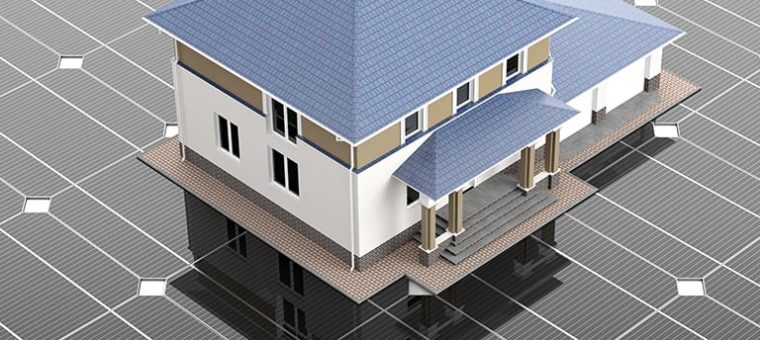Going solar. How much does it cost? Probably one of the most complicated questions, and one that most homeowners find a hard time getting an answer for.
The cost of switching to solar includes more than just the cost of a solar PV panel itself; you need to factor in the full financial investment needed to purchase, install, finance, and keep up this system over the course of its lifetime. However, the potential to save–and earn money back–must also be considered.
The easiest way to factor the value of going solar is determining how much you pay for your current electricity from a local grid on a monthly basis compared to how much you can get paid for the electricity produced from PV after those initial costs are deducted over the course of the system’s lifetime. This is the amount that should matter to homeowners when they consider whether or not solar can save them money.
Caught up in this big picture approach is the idea of solar grid parity.
Defining Solar Grid Parity
So what exactly is solar parity and how does it affect the decision to go solar? It is the point at which the amount of money needed to produce power from solar panels is either equal to or less than the cost of paying for electricity from the grid. The sooner we get to solar parity across the country, the cheaper it will continue to get.
Essentially, the more people recognize the benefits of solar and choose to invest in this renewable energy source, the sooner it will become adopted across America, making energy cleaner and more affordable for homeowners.
How does this work? When solar companies can buy in bulk to meet the growing consumer demand for solar panels, they can lower the cost of installation by getting better prices on materials. This also boosts investment in transmissions lines and helps the cut solar costs, which means it can meet the rising cost of electricity sooner, resulting in parity, or equality, until solar eventually becomes even cheaper.
How Close Is the U.S. to Solar Parity?
So what is the timeline for solar parity in America? That depends on a number of factors, with each state facing different challenges, from limited sun exposure to transmission line investment costs. The country has set a target of boosting renewable energy usage to 20% by 2040, which would likely result in solar parity nationwide.
While we have some ground to cover as a country, California is leading the way as one of the 20 states at grid parity.
Why California Homeowners Should Be Going Solar Now
The point of parity on the grid has already been reached in California, which means installing solar panels is now more affordable than the average electricity bill homeowners have to pay off every month. Solar isn’t just an option for investing in the future of affordable energy, it can start saving homeowners money right now.
The average homeowner will cut back on their costs between 20% and 40%–especially when they choose to partner with a company like Semper Solaris. With zero down and zero out of pocket, solar energy has never been more affordable and realistic for homeowners.
Factors that make going solar affordable to homeowners now:
- 26% federal tax credit
- Net metering can result in money back from electricity companies
- California has already reached grid parity
- Great savings in Semper Solaris’ online specials
- Some properties may go months without having a bill
- Interest is tax deductible
- Low income and low FICO scores can still finance through PACE
What Is PACE Financing?
The PACE Financing program is a great option that makes setting up solar energy easier for homeowners, ultimately pushing us closer to solar grid parity. Short for Property Assessed Clean Energy, PACE is a financing option designed to help homeowners save money when investing in cleaner energy while adding more value to their property. PACE covers 100% of the solar installation cost and can be paid back over the course of 20-30 years, with an assessment added to the property tax bill. This also means homeowners start saving from day one!
The Senate bill on PACE (SB-242) will add more consumer protections for residential PACE programs in California, providing even more peace of mind to homeowners wanting to invest in energy upgrades that wouldn’t otherwise be accessible to them.
With California at solar parity, switching to solar is the smart investment for homeowners who want to instantly save on their energy bill and be a force for renewable energy.
Ready to Go Solar, American Style? Semper Solaris offers zero-down solar solutions. Start with a free energy analysis!
